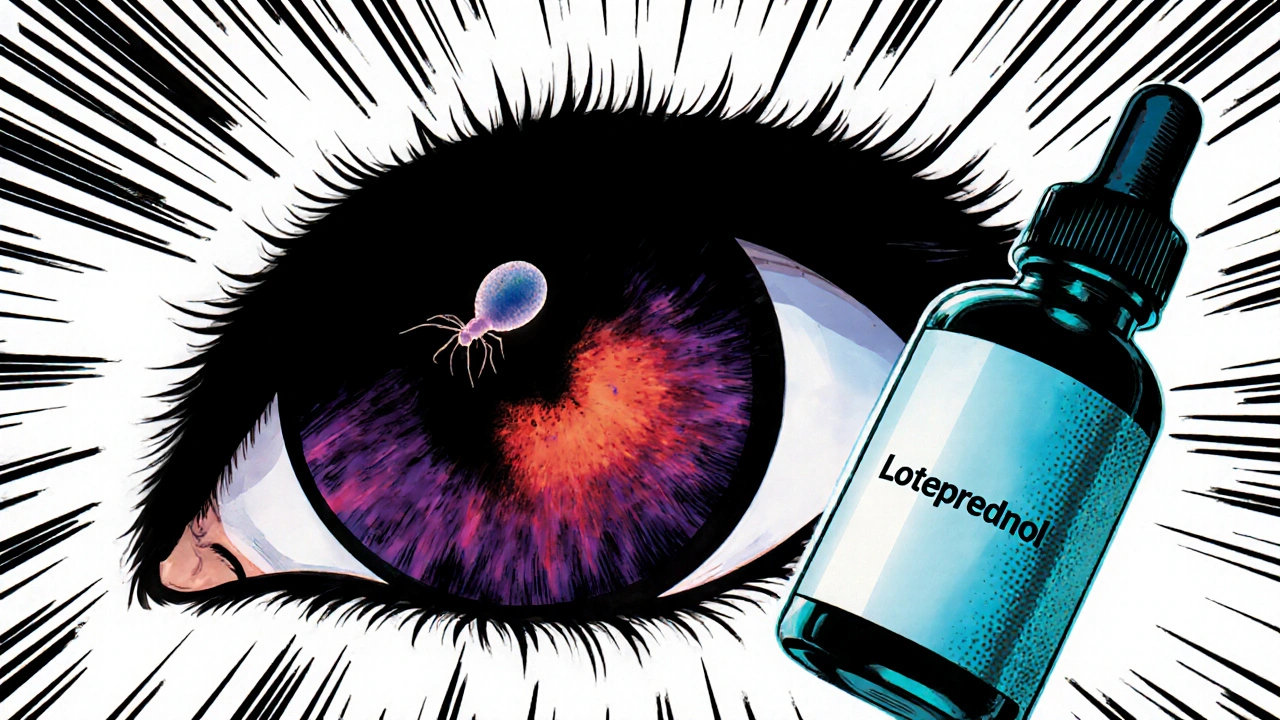Toxoplasma Eye Infection: What You Need to Know
When dealing with Toxoplasma eye infection, a parasitic inflammation of the retina and choroid caused by Toxoplasma gondii. It’s also known as ocular toxoplasmosis and typically shows up as chorioretinitis, a condition that can be especially aggressive in an immunocompromised host.
The parasite spreads most often after accidental ingestion of oocysts from cat feces or undercooked meat. Young children and pregnant women are vulnerable because the infection can cross the placenta, leading to congenital eye disease. Even healthy adults can develop a re‑activation of dormant cysts later in life, especially when immunity drops.
Typical warning signs include blurred vision, floaters, or a dark spot that slowly expands across the visual field. An eye doctor will look for characteristic lesions using fundus photography or optical coherence tomography. Blood tests that detect Toxoplasma‑specific IgG and IgM antibodies help confirm whether the infection is recent or a re‑activation.
How to Recognize and Manage the Infection
Treatment aims to halt parasite replication while limiting inflammation. The classic regimen combines pyrimethamine, sulfadiazine, and folinic acid; many patients also receive oral clindamycin as an alternative to sulfadiazine. Short courses of systemic steroids can reduce swelling, but they’re only added under close supervision because they can weaken the immune response.
Follow‑up exams are crucial. Even after the lesion heals, scar tissue may cause visual distortion, so regular monitoring ensures any new activity is caught early. Lifestyle tweaks—cooking meat thoroughly, washing hands after handling raw food, and avoiding changing cat litter without gloves—greatly lower the chance of a first‑time infection or a relapse.
Below you’ll find a curated list of articles that dive deeper into each aspect—diagnostic tools, medication comparisons, dietary tips, and real‑world patient stories—so you can get a full picture of how to protect and treat your eyes when toxoplasma strikes.

Loteprednol's Role in Managing Ocular Toxoplasmosis
Learn how loteprednol works, dosing guidelines, safety checks, and evidence for treating ocular toxoplasmosis, with practical tips and a comparison to other steroids.
Categories
- Health and Medicine (40)
- Medications (40)
- Health and Wellness (34)
- Online Pharmacy Guides (15)
- Nutrition and Supplements (7)
- Parenting and Family (3)
- Environment and Conservation (2)
- healthcare (1)
- prescription savings (1)



